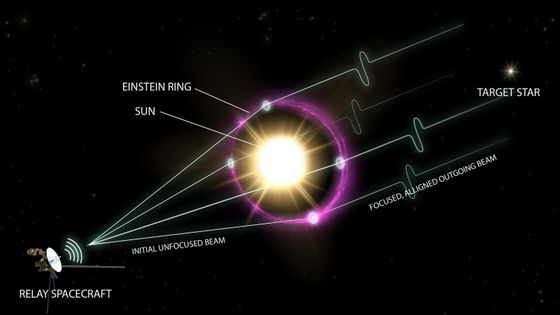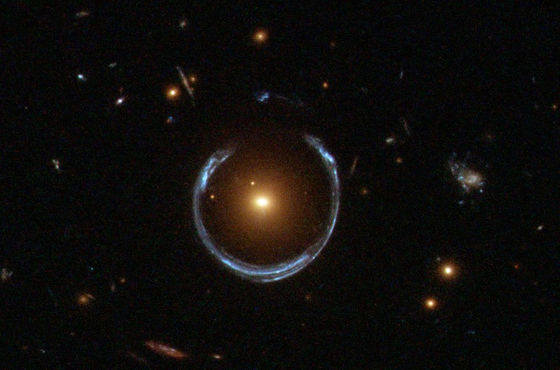The extraordinary idea of turning the sun into a 'super giant telescope'

by
The larger the lenses and mirrors used in a telescope, the more light it can collect, so it is recommended to use a telescope as large as possible when viewing faint celestial bodies. Space.com, a media outlet that covers astronomy news, has explained the technology that takes the idea that the bigger the telescope, the better, and uses the sun as a giant natural telescope.
Could we turn the sun into a gigantic telescope? | Space
https://www.space.com/sun-gigantic-telescope-with-gravitational-lensing
With radio telescopes , the larger the effective diameter of the antenna, the higher the resolution possible. Therefore, when precision is required, a technique called Very Long Baseline Interferometry (VLBI) is used, in which multiple large antennas installed over a wide area are linked together.
One of the major applications of VLBI is the international collaborative research project, the Event Horizon Telescope (EHT), which attempted to image a massive black hole. This project linked radio telescopes around the world to operate as a virtual Earth-sized radio telescope, and thus far humanity has succeeded in capturing the outlines of two black holes,M87* and Sagittarius A*.
First image of a black hole in the same galaxy as Earth captured - GIGAZINE

There are plans to launch observational satellites into space to create an even larger observation network, known as Space VLBI , but Space.com points out that 'thankfully, we already have a giant telescope at the center of our solar system: the Sun.'
The Sun itself is neither a lens nor a mirror, but its enormous mass causes distortions in space-time that bend the light passing by the Sun, causing it to converge as if it had passed through a convex lens. This phenomenon is called the ' gravitational lensing effect ,' and the idea of using the gravitational lens created by the Sun to observe the far reaches of space is called ' solar gravitational lensing (SGL) .'
The EHT's capabilities are said to be such that it could spot an orange placed on the surface of the moon, but if the 'solar gravitational lens telescope' is realized, humanity will have a telescope with an accuracy of 1/10 billionth of an arc second, a million times greater than that.

by Dani Zemba/Penn State, CC BY-NC-ND 4.0
However, there are challenges that must be overcome before the Sun can be used as a natural telescope.
First, to observe with a solar gravitational lens, we must go to a place where the lens can be focused, but the distance to the focal point of the solar gravitational lens is about 550 astronomical units (AU), or about 82 billion kilometers, which is 550 times the distance from the Earth to the Sun. This is more than 10 times the distance from the Earth to Pluto and more than three times the distance to
This means that to observe solar gravitational lensing, a spacecraft must be sent far away from Earth, must carry a sufficient amount of fuel to remain there, and must scan the entire area, since the image produced by solar gravitational lensing spans tens of kilometers in space.

The idea of using the sun as a lens dates back to the 1970s. Using knowledge and technology accumulated over the past half century, a practical plan has been devised to use CubeSats, small, lightweight satellites.
The method involves sending a fleet of CubeSats into deep space on

Space.com said, 'A solar gravitational lensing telescope would be better than any telescope humanity could build in the next few centuries. But those telescopes already exist; all that's left is to get the camera in the right position.'
Related Posts:
in Science, Posted by log1l_ks







